One of my absolute favorite times of year to hunt is not September for elk, not November for whitetails, but January for Coues deer. While the rest of the country is hibernating next to a fireplace and feeding off of the memories from last fall, I’m sitting high on a glassing knob in Arizona with my bow at my side.
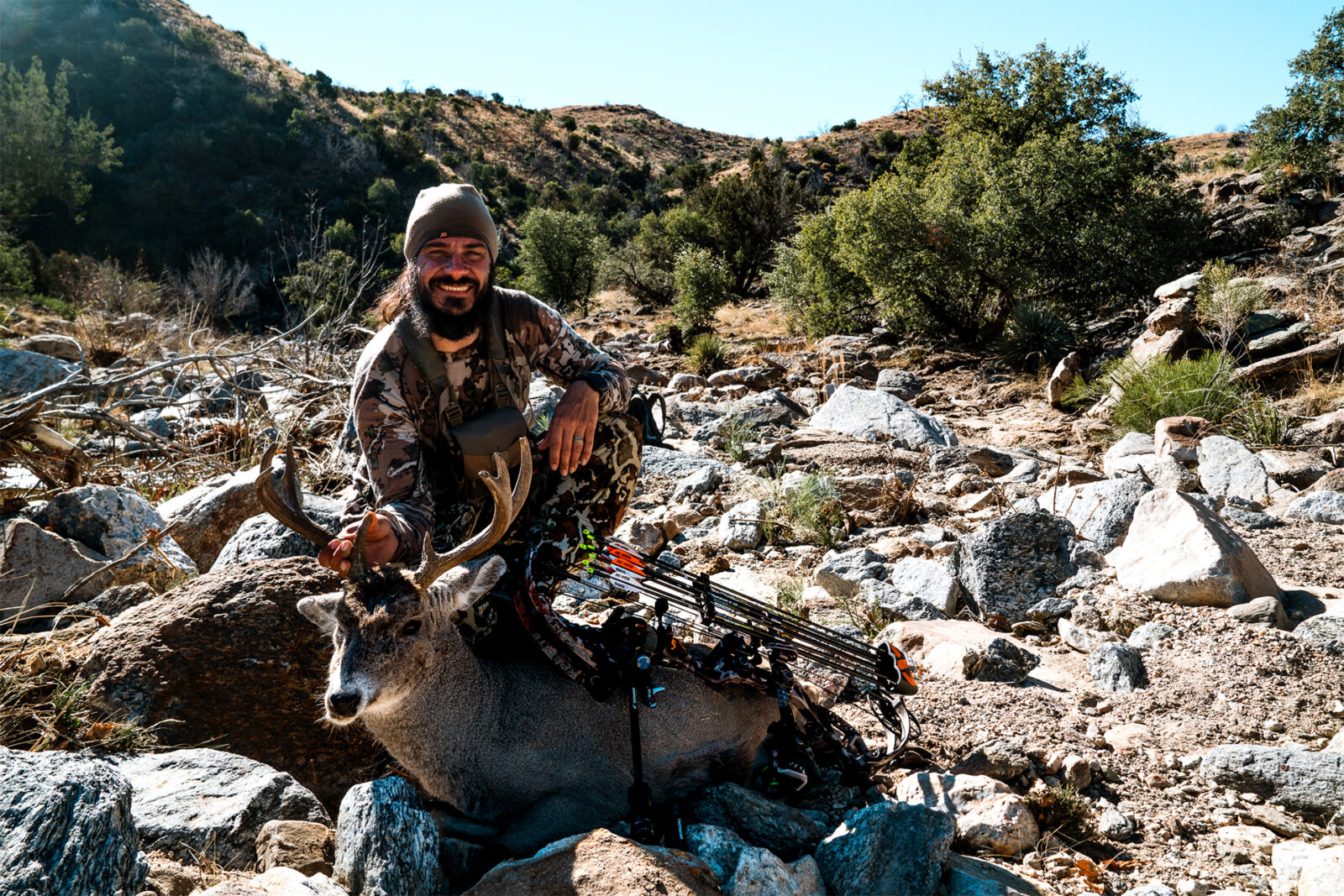
Arizona has OTC archery opportunities for resident hunters (OTC non-permit tags for non-residents are available in limited quantities online on a first-come, first-served basis). Each unit is managed off a species-specific buck quota. Once a quota is hit that unit will shut down the following Wednesday at sundown for that particular species. The tag itself is not species-specific and can be used on Coues deer or mule deer.
With all that said—and in light of the coming January archery season—I’m going to take time to lay out exactly how I e-scout for rutting Coues bucks here in my home state of Arizona. I’ll go through how to pick out an area, finding the right country for the job, best glassing set-ups, and more.
For this article, I will be mainly focusing on e-scouting for spot and stalk bowhunting Coues deer.
Finding the Right Unit
The first thing on the docket for e-scouting Coues is simply narrowing down a unit in which to hunt them. This means now is the time to turn on the Unit Layer for Arizona.
Coues deer mostly inhabit the southeastern portion of the state, but they do range north of that past the Mogollon Rim and even into the White Mountains. I suggest doing a little digging on buck quotas here. Areas with bigger quotas are usually going to have more deer. You could also simply click any given area on your onX maps. A tab will pop up giving the name of the national forest and there will be a “Hunt Unit” option below that. Click that and you’ll see a breakdown of the huntable species in the area.
Another thing you could do is turn on the Arizona Game Distribution Area Layer for Whitetail Deer. This will show a layout through the whole state of where the Coues whitetail deer inhabits.
There is ample opportunity in Arizona for Coues, so you really can’t go wrong in any of the units. The key is finding the right area within that zone.
Elevation for Coues

Coues deer are incredibly adaptable and can live anywhere from 2,500 feet up to 10,000 feet. With that in mind, I do believe there is a sweet spot. For me, that’s between 4,000 – 6,500 ft. This is where your topo map comes into play. This elevation offers a great variety of cover, glassing opportunity (visibility), and archery-huntable topography.
Huntable Country
As I’m sifting through areas on my map, I like to turn on the Hybrid mode within onX. Because on top of picking the right elevation, I also want to make sure the country I’m planning on walking into isn’t too dense with cover. This wouldn’t bode well for spot-and-stalk bowhunting. It needs to be huntable. My favorite type of country to look out for is broken country. Areas that open enough to glass, but offer enough cover and topography to make stalks and avoid being seen. A person could absolutely succeed in more open terrain or dense terrain for that matter, but your highest likelihood of success will be hunting these broken areas.
Water Matters
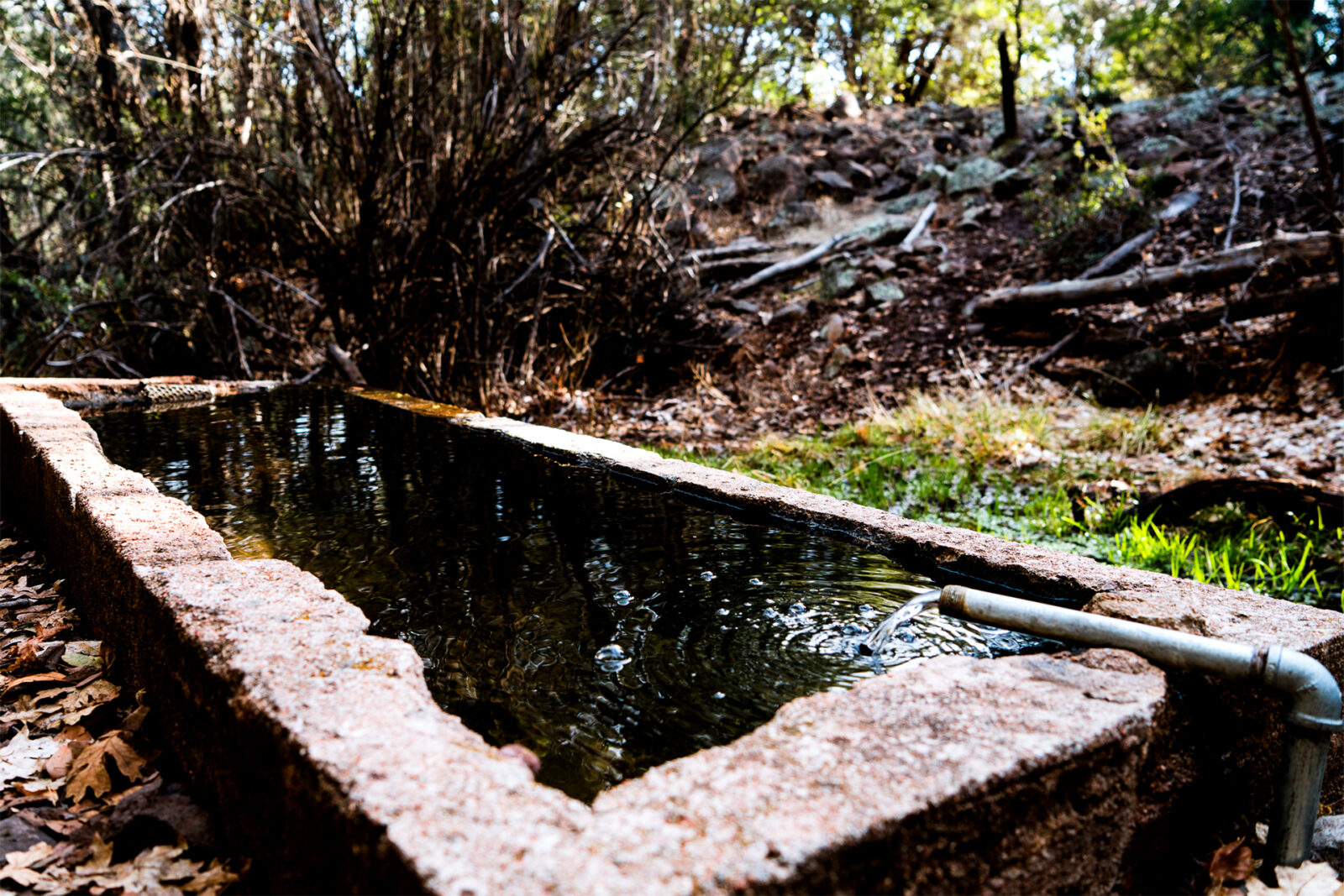
Another thing you’ll need to keep in mind is that this is indeed a desert, so water matters. I always have my water layer turned on because of this. Animals will 100% congregate around water sources here, be it a perennial spring, creek, or even a stock tank. Bucks need to drink, especially after chasing does around. So, water within the spots I’m looking at is mandatory. If it’s not there, I look elsewhere.
The tough part here is proofing the water source. Springs are the toughest, but with a little research on backpacking websites you can often find out valuable info about their reliability. Perennial creeks, streams, and rivers though can be identified right from your onX screen. Unbroken blue lines indicate a perennial water source and broken blue lines indicate seasonal. Stock tanks can also be seen right from satellite imagery.
In areas where there isn’t a definite perennial water source, I’ll try to section off spots that are showing several springs and stock tanks that are relatively close to one another. This can be achieved by simply zooming out on your maps to show a wider area. Doing this just ups the odds of there being water in one of those spots, which in turn ups the odds of animals being there.
Roadless Areas
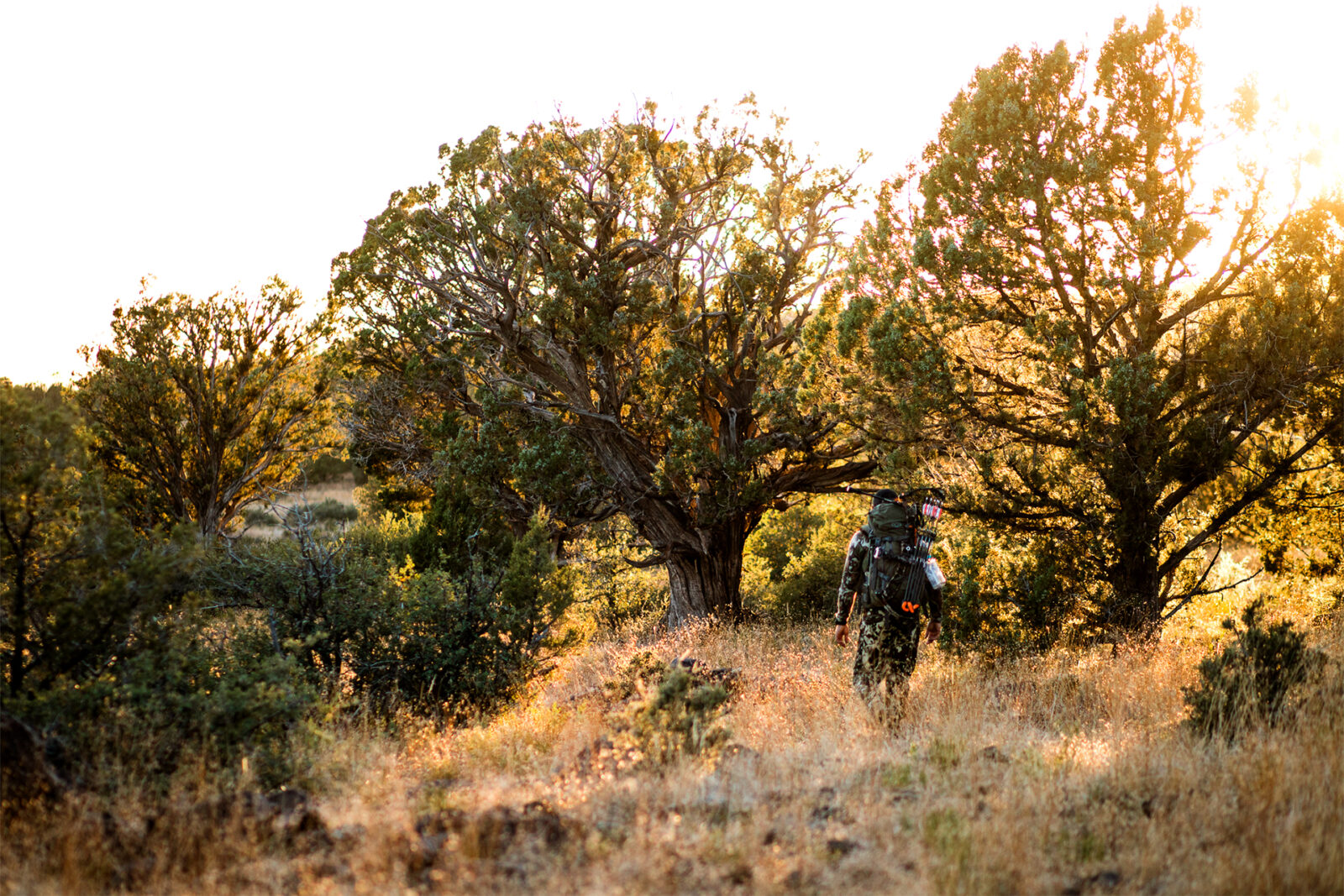
If you’re anything like me, running into folks on a hunting trip isn’t at the top of your to-do list. I like a good chat just like the next guy, but when I’m hunting, I want to be alone. So to avoid that, the next thing I’ll do is start sectioning off spots without roads going through them. These don’t have to be wilderness areas, but those are always nice, so make sure you’ve got your Wilderness Area Layer on. And don’t think you need to hike 10 miles in, because you don’t. A mile off the road will likely leave you alone in Arizona.
To do this, I’ll draw shapes on my maps of areas that meet the above criteria. Click on the “Draw Shape/Measure Area” tab in your tools. You can mark large potential hunting areas by doing this, so you don’t lose track in the process of e-scouting. I’d mark off several areas, just to make sure you have backup spots.
Access Points
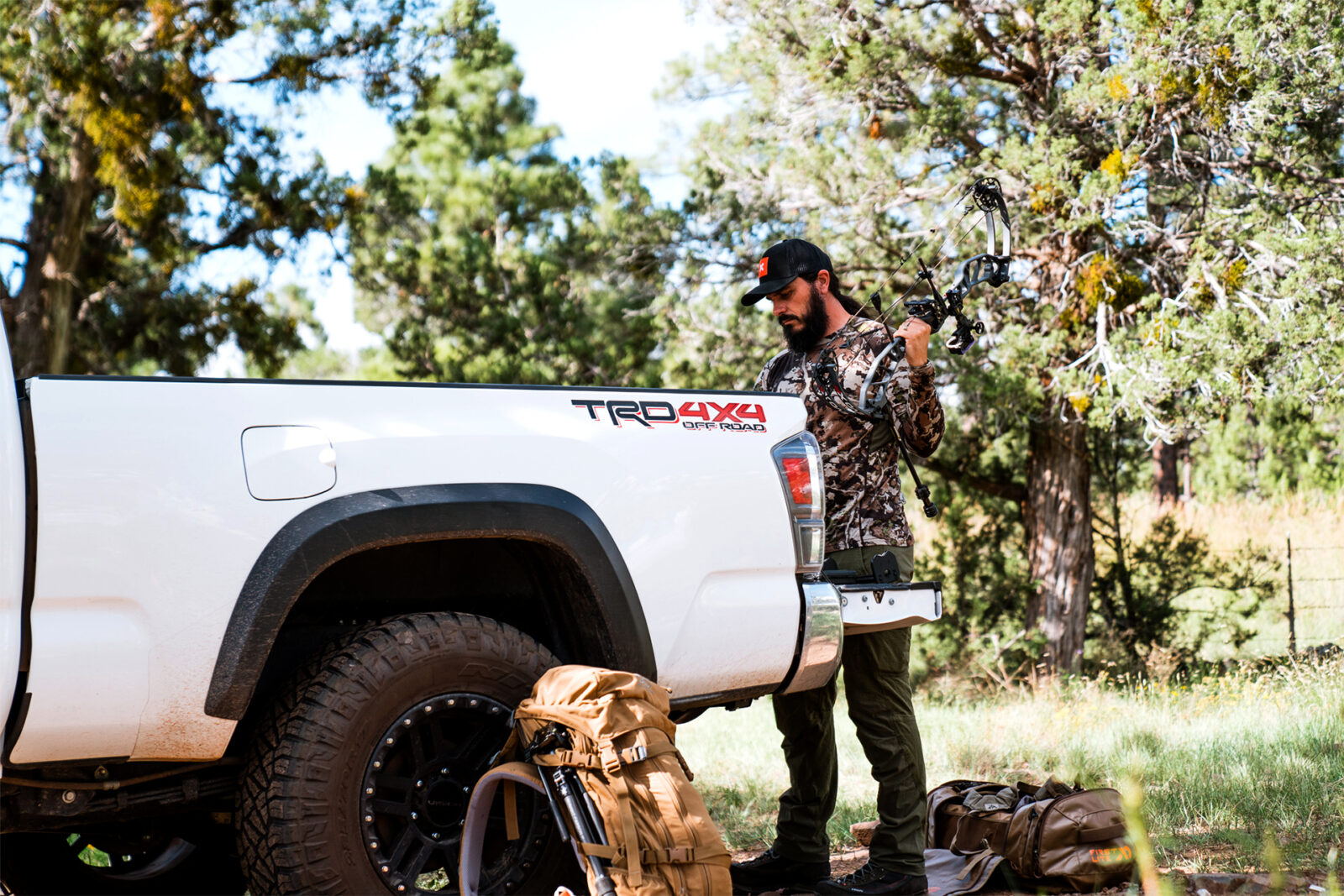
Now that we’ve found a unit, the right elevation, the right country, and if water is present, it’s time to figure out how to access these spots in the first place. To do this, we need to make sure our Roads and Trails Layer is turned on. As you can see, Arizona has no shortage of roads. So much so that folks rarely leave them. Which is good for you.
This is pretty self-explanatory. Mark access points into the country you want to hunt. Emphasis on “points” though. While Arizona does have a lot of roads, some of them are wicked bad and not passable in a truck. For this reason, I always have the Motorized Roads and Trails layer turned on. It allows you to click a road and will give a breakdown of the surface type and what type of vehicle is recommended for travel. Even with that said, there is only so much you can tell; the road could be completely washed out in sections—which is why I always note several different access points into an area.
Glassing Spots
Glassing is without a doubt the best way to locate Coues deer. So, next for me is cataloging potential vantage points to glass from. I’m not a big fan of glassing from the bottom up, as it limits visibility due to the vegetation. Glassing from the top down, or at least across at equal elevation, is way better for seeing what’s lurking about. Using the 3D Mode here can give a person a good idea of what their view will be from any given glassing point.
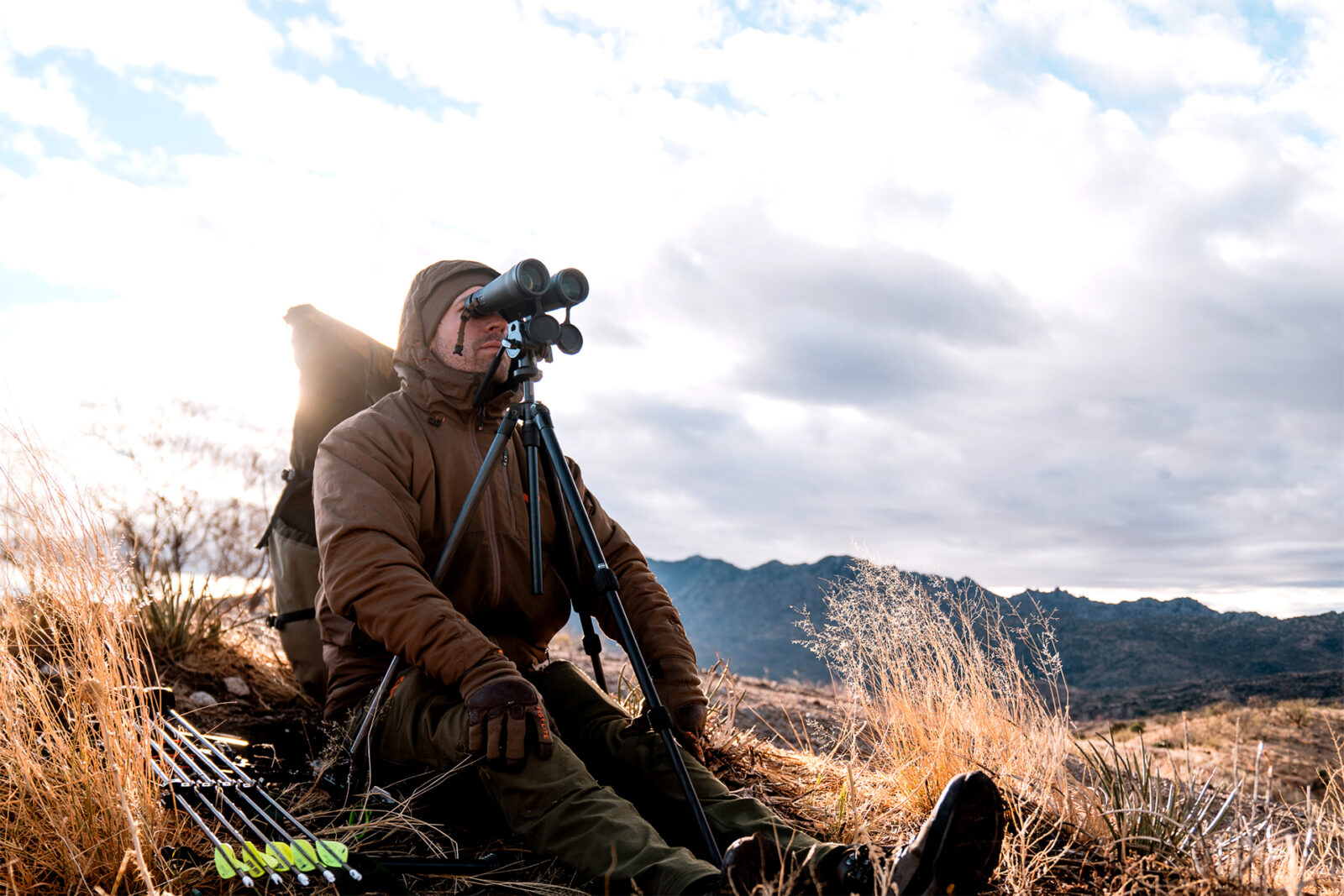
A good rule of thumb here is to put the sun at your back in the morning and glass into the sun for the evening. Which basically means glassing southern exposures the first part of the day and northern exposures after the fact. That will no doubt put deer in front of you. It works, but is not my favorite setup.
My favorite glassing setup is looking west at a long north/south main ridge with fingers coming off of it. I know that sounds very specific, but hear me out. By looking to the west first thing in the morning, you’ll be looking at an eastern exposure. So, the sun will be on it first thing, which means deer. The fingers coming down off that main ridge will have two sides to them. The northern side will usually be thicker and the southern side will usually be more open. This means that I can watch deer go back and forth from feeding to bedding.
Closing
Everything I’ve outlined above is proven. It is my process that I’ve acquired through years and years of chasing Coues deer around the Arizona desert with my bow. And while there is nothing, and I mean nothing, that beats boots on the ground scouting, most of us are not blessed with abundant free time to spend in the hills outside of hunting. So, e-scouting is our ticket to planning a quality hunt. It’s a damn good one too if you have your ducks in a row.
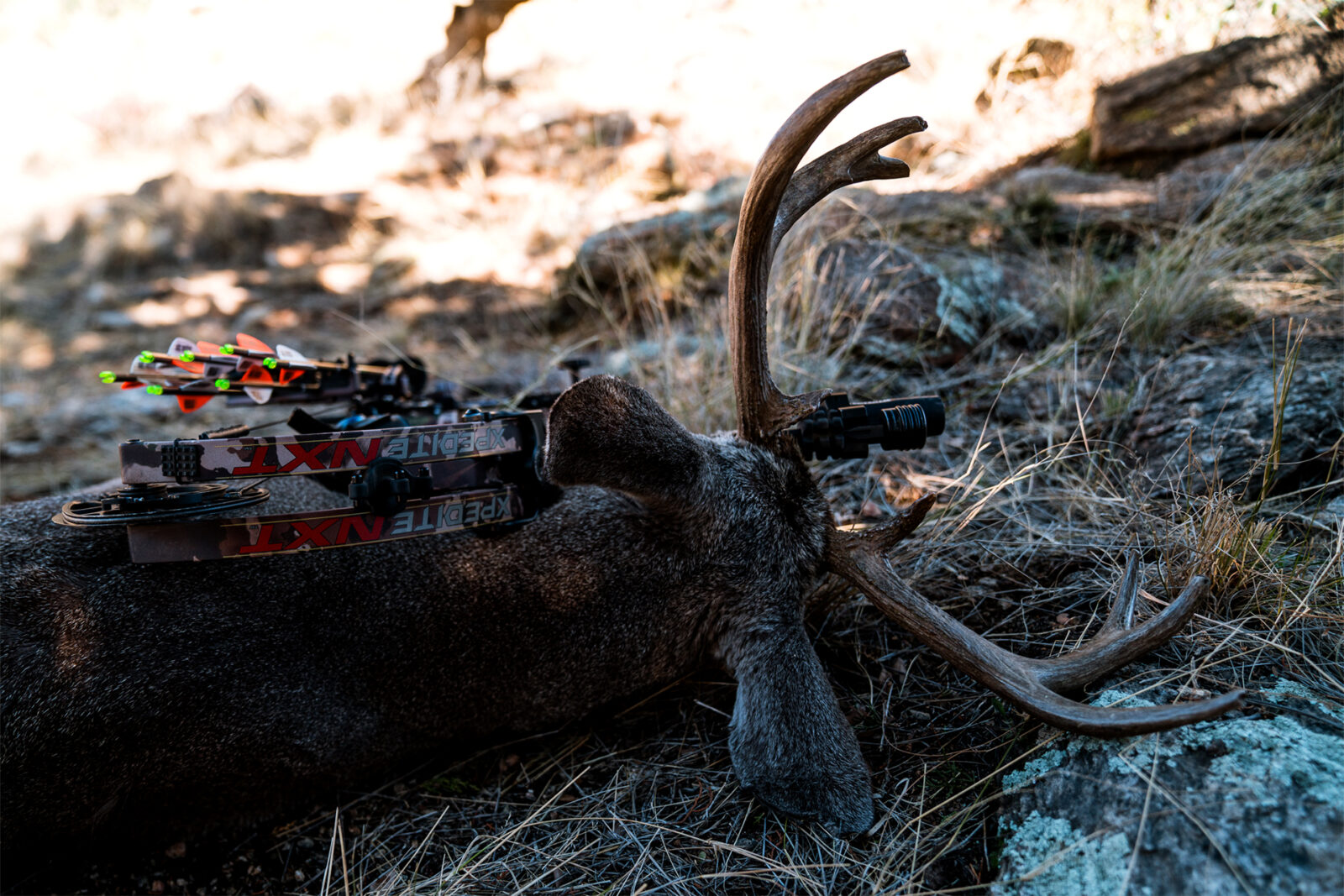
Bowhunting Coues deer during the rut in Arizona is nothing short of incredible. Between their captivating presence on the landscape to the stunning country they inhabit, it is a treat to walk among them. And an even bigger treat to test your skills as a spot-and-stalk bowhunter, as they are arguably the most challenging critters to stalk in North America. They are the gray ghosts of the desert and after hunting them, you can expect to be haunted for the long haul.
E-Scouting for Arizona Archery Coues Deer
This is a full walkthrough of what Dialed in Hunter does to e-scout for the January archery Coues season in Arizona. What he looks for, what he ignores, and how he goes about finding a brand new area to hunt.